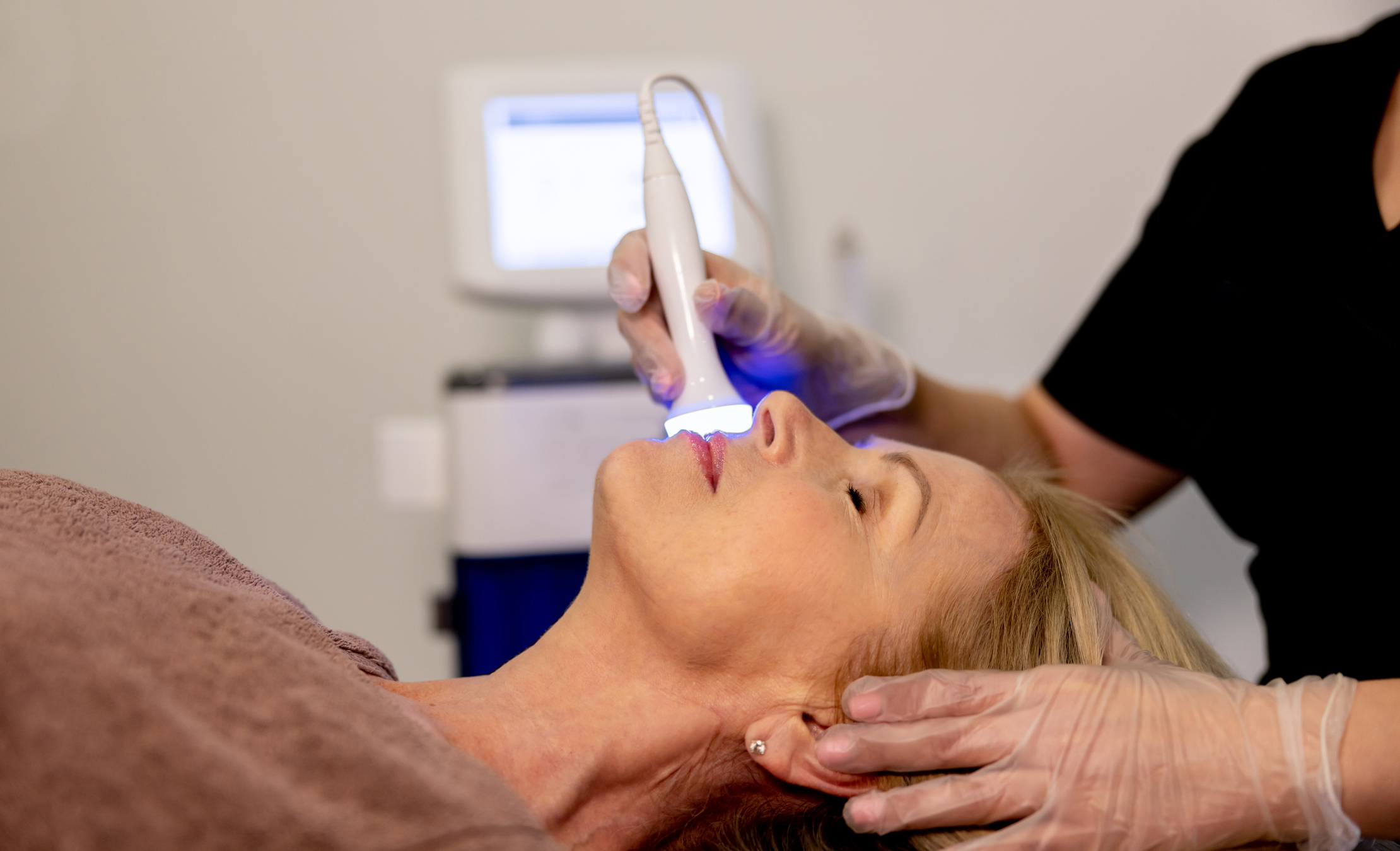If you’re looking for a non-invasive treatment that can produce dramatic results for concerns like…

Non-Surgical vs. Surgical Facelift: Which Suits You Better?
Everybody gets older. As a result, the “smile lines” between the nose and the lips become deeper. Sun exposure, lifestyle, pollution, and heredity are just a few factors that influence skin aging. These factors can impact how we appear, regardless of how healthy and youthful we feel.
Nowadays, there are several alternatives for treating obvious indications of facial aging. Choosing between surgical and non-surgical cosmetic treatments depends on a variety of factors. Consider this a quick guide before your first consultation.
Surgical vs. Non-Surgical Facelift
What is a Surgical Facelift?
A surgical facelift is a procedure that removes extra facial skin to rejuvenate the appearance of the face. The mid-face area is generally the first to be addressed; however, patients can also choose from the following options.
- A brow lift may reduce the appearance of wrinkles and frown lines on the upper portion of the face.
- A neck lift can be performed if elevating the mid-face won’t achieve the desired correction in the neck.
- Eyelid surgery is recommended for patients who are conscious of their hooded eyelids or bags beneath their eyes.
These are some pros of surgical facelifts.
- When compared to non-surgical methods, the results are more long-lasting and effective.
- A facelift can treat many issues with a single surgery.
- The results might give you more confidence, especially if you think wrinkles and sagging skin make you look much older than you are.
These are some cons of surgical facelifts.
- Facelift surgery has a long healing period. You’ll need time to recover, which includes paying close attention to your incisions and getting enough rest.
- Surgical facelifts need some post-operative care on the part of the patient, usually for the first several days.
- Surgical facelifts cost more than non-surgical treatments.
What are the side effects of a surgical facelift?
A surgical facelift is safe when performed by board-certified plastic surgeons. However, certain adverse effects may occur. Some side effects of surgical facelifts include the following.
- Fever
- Infection
- Bruising
- Loss of muscular function or feeling for a short period
- Hair loss around the incision area
- Swelling, pain, and reddening around the incision
What is a Non-Surgical Facelift?
A non-surgical facelift is a minimally invasive procedure that can help you restore a young glow by providing modest and natural-looking enhancements. A combination of one or more procedures, such as ultherapy, laser treatments, fillers, and Botox, may be used in the treatment.
The following are some of your non-surgical facelift options.
- Botox — It is most commonly used to address dynamic lines around the eyes and forehead, but it may also be used to enhance the brow, improve the look of the neck and jawline, soften lines around the lips and nose, and improve the appearance of the neck and jawline.
- Dermal Fillers — Dermal fillers like Juvederm are often used to plump lips and enhance cheekbones, although they may also be used to smooth fine lines and deep wrinkles and restore facial volume lost due to age or weight loss.
These are some pros of non-surgical facelifts.
- These treatments are non-invasive and require little to no downtime.
- Throughout the therapy, the patient has minimal pain and discomfort.
- Since no extra medicine is required, these procedures may be finished in about an hour.
- The skin is not sliced or pulled tight in a non-surgical facelift, but it is plumped and volumized, giving the facial features and skin a more youthful appearance.
These are some cons of non-surgical facelifts.
- Non-surgical treatments do not have a long-term effect.
- The majority of patients will need to arrange follow-up sessions in order to maintain their results.
- Non-surgical facelift procedures do not provide the same dramatic effects as surgical facelift treatments.
- This requires additional expenses for touch-ups. In the long term, this may make non-surgical facelifts as expensive as or more expensive than standard surgical facelifts.
What are the side effects of a non-surgical facelift?
Only a few people have these negative effects. It is recommended that you meet with your cosmetic surgery specialist to discuss the treatment choice that is suitable for you, as well as methods to achieve the best outcomes.
The following are some of the most common non-surgical facelift adverse effects.
- Swelling and redness can develop in some cases
- Allergic reactions occur in some people
- The treatment area may experience numbness or bruising
The following are some uncommon adverse effects of non-surgical facelift treatments.
- Bumps
- Blistering
- Skin depressions
- Permanent pigmentation
Are you a good candidate for a facelift?
The following are the most frequent facial features that indicate whether you are a good candidate for a facelift.
- Skin sagging in the midface and/or jawline
- Neck skin that is wrinkled and sagging
- Deep wrinkles from your nose to your mouth’s corners
- Loss or displacement of facial fat volume
- Lines extending down your chin from the corners of your lips
- Loss of muscle tone or sagging in the lower part of the face, resulting in jowls
- A double chin is caused by loose skin and fatty deposits beneath the chin and jaw
When to Consider a Facelift
While physical manifestations of aging are the primary reasons you may choose to get a facelift, some emotional and mental factors can go into the decision as well.
Here are examples of a few instances when getting a facelift might be right for you.
- If you don’t think your face reflects your young personality and level of energy.
- If you believe your facial sagging and extra skin is preventing you from progressing in your job or social life.
- If you have indications of aging on your face but still have some elasticity in your skin.
- When you glance in the mirror, you see that time, sun exposure, and heredity have made their mark, and you no longer resemble yourself.
Talk to Specialists
A facelift is a significant decision that should be carefully considered. Before you proceed with any operation, you’ll need expert advice. The general rule is to seek advice from a reputable cosmetic surgeon first. They’ll examine your face issues as well as your overall health when laying out your alternatives.
Vargas Face and Skin Center provides both surgical and non-surgical facelift solutions to address a wide range of issues. During your appointment, we can go through your choices and suggest a treatment plan that is right for you.
If you’re ready to take the next step and find out which method is best for you, request a consultation or give us a call at 913-381-4900.








This Post Has 0 Comments